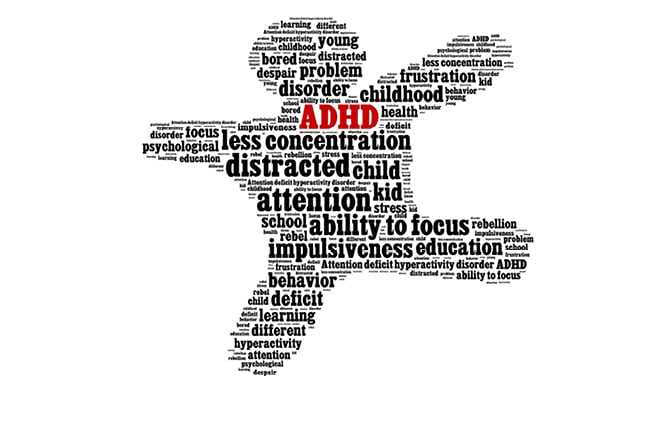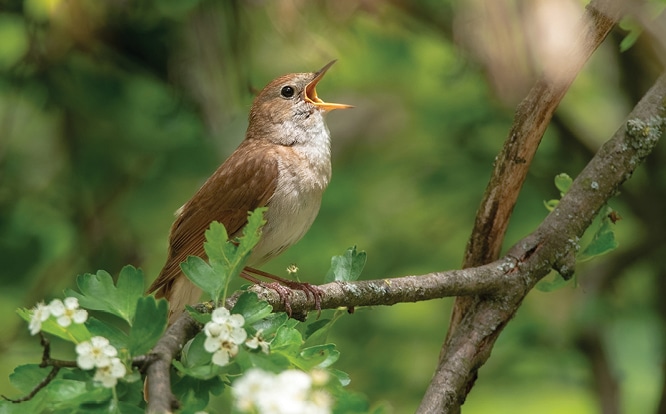
Managing ADHD in the Classroom
July 18, 2022
Better ADHD Management through Knowledge
July 18, 2022How to Engage Even the Most Distracted of Learners Through Introducing Music into the Learning Experience
by Rabbi Dov Chastain
As an individual who was diagnosed with ADHD as a child, it is very exciting for me to be able to write about how to reach other learners with ADHD, as I can offer a unique perspective as to the necessary ingredients in the recipe for success which were successful in my own education during my formative years, and those that I have had success within my professional career teaching my own students.
Although ADHD can present in various ways, in this article I hope to address the common symptoms of inattention, frequent daydreaming, squirming, forgetfulness, excessive talkativeness, hyperactivity, and impulsivity (CDC, 2020). A student’s academic success is extremely connected to their ability to pay attention to specific tasks and expectations without becoming distracted, so students with ADHD tend to struggle within general education classroom settings. The ability to focus long enough to gather the information necessary for doing classwork, completing assignments, and appropriately participating in discussions with their teachers and classmates can be difficult for the student with ADHD (SCIPS, 2004).
The struggles of ADHD often play out as specific behaviors within a classroom. Students with ADHD often appear to have large amounts of energy and restlessness. This energy can often lead to social challenges, and disruptions to the learning process in a structured classroom environment (Frantz, 2020). These students may experience difficulties within the structured environment of a class or focusing on their class work or homework. They often require adjustments to the learning environment to help them remain focused on the task in hand (SCIPS, 2004). It is the purpose of this article to discuss a specific strategy that is well documented and has allowed me to reach many distracted students.
This topic takes me far into the recesses of my own learning experience as a young child. I can remember being quite a handful for my teachers during elementary school. I certainly was not an easy student, as I missed a lot of school due to treatment for acute lymphocytic leukemia (ALL,) and was diagnosed with ADHD early on in my educational journey. Imagine having such a child – incredibly distractible, and missing significant amounts of school – in your classroom. I remember daydreaming in class all the time. I would dream that I was a Major League Baseball player, Batman, on vacation at Disney World – you name it, I day-dreamt it!
If, by chance, I was interested in the material that was being taught, the teacher had a different set of challenges that I presented them. I was unable to contain my thoughts. I would blurt out answers in class, and share what I knew with my friends. Looking back, I’m sure it was a challenging experience for those trying to educate me in a general education classroom in those early years. My trajectory certainly did change after the completion of chemotherapy and a bit of maturity, but I want to focus on how to reach the child I was in early elementary.
The Power of Song
With all my challenges, there was one rebbi, and one form of teaching, that was able to get me fully engaged in the learning process. The rebbi’s name was Rabbi Mordechai Dubin, and he possessed the “Power of Song.” Rabbi Dubin would play his guitar and sing songs to teach us different lessons from the Chumash. When I heard him singing, I was drawn into the learning experience, and when he would add hand motions, I was hooked. I can sing for you today the songs he taught me during the 1991-92 school year. Not only did his songs infuse the information into my mind at that time, but they also stored it deep inside, in an area that I can access even today. I was a child at the time and didn’t think much of the experience other than that Rabbi Dubin was my favorite teacher.
When I attended Loyola University, I took a class on strategies for differentiating instruction, and specifically how to modify for different students with special education needs, and how to create an IEP (Individual Education Plan). This class was given by Dr. Judith Docekal, and she spent a lot of time discussing the myriad learning disabilities that can appear within a classroom, and the various methods of modifying to meet the needs of one’s students. In discussing children with ADHD, she spoke of being sure to get their attention, and of getting a child’s body and senses involved in the learning experience. Her ideas were very much captured in an article written by Josh Boring, and published by ADDitude (2021), which discussed methodology to reach children who cannot learn through frontal teaching alone. In our class discussions about teaching children with ADHD, I relived how incorporating music into the learning experience reached me as a student and wrote about incorporating music in a model IEP that I created for class.
In my first experiences in the classroom in Ma’ayan Torah Day School of Portland, OR, I had the opportunity to teach Judaic studies to a wide range of grade levels. It was the infancy of the school, and I ran a variety of stations and centers for children in every grade level from second through seventh. There were opportunities to use the “Power of Song,” but they were few and far between. I used choral reading to teach Chumash, and saw that in doing so, I was able to give my students a tune as a tool to be able to help them recall the material they had learned, but it was a few years later, in my second-grade classroom in Rochester, that I really harnessed the “Power of Song.”
I inherited quite the classroom from Morah Adina Dan at Derech HaTorah of Rochester. She had tactile teaching tools for every part of her curriculum, but there was one gift that she bestowed upon me that I really enjoyed and developed further – it was called “Songs Around the Room.” Morah Dan had posters all throughout her classroom with certain skills she wanted her students to memorize throughout the year. Every class period would begin with “Songs Around the Room.” As much as I loved music, I took this idea and ran with it. I put new tunes to the contents of all the posters we had on our classroom walls, which included: the Hebrew alphabet, Hebrew months, Hebrew pronouns, the days of the week in Hebrew, colors in Hebrew, Numbers 1-20 in Hebrew, and the parshiyos of the Torah. It started with a lot of information I wanted them to memorize, but it evolved a lot in that first year, and even more in the years to come. I added more songs throughout that first year and alternated between them on different days of the week, so all of them could stay fresh in the minds of my students. I added hand motions and dances to a lot of our songs, and I noticed that there were students of mine who were very distractible, and who struggled with certain parts of my curriculum, who absolutely shined during “Songs Around the Room,” and I would praise them for that, and allow them to lead different songs. It gave those students something they could excel at and put them in the mood to learn. The challenging behaviors they often displayed were gone during “Songs Around the Room,” and I was holding their attention by involving the whole child in the learning experience. It was quite a joy for me to behold that.
That year I started using the Lehavin U’lehaskil curriculum, and it really changed how I taught. Their workbooks are accompanied by music CDs. Anyone who is using their curriculum and is not utilizing the songs they developed is missing out on an amazing resource. They have songs associated with all the main Chumash and Hebrew skills they teach at the different grade levels. This was a game changer for me and changed “Songs Around the Room” from a time during which we memorized general knowledge that I wanted the students to have, to a time where we learned and memorized the main skills we were trying to learn and master in second grade. I incorporated all the Lehavin songs into “Songs Around the Room” as they came up during the curriculum and had a rotation of songs in place so we could memorize them all.
I want to illustrate clearly how this affected the students in my class who exhibited symptoms of ADHD. There were students in my second-grade classes who were struggling mightily with focusing in class, as well as impulsivity and the other symptoms listed above. They were earning low grades in general studies, and in some areas of Judaic studies as well. I gave assessments in my Chumash class and would encourage students to use the resources at their disposal, which included the posters on the walls of our classrooms, and the songs that we learned. I cannot even begin to count the number of times I walked over to one of those struggling students during an assessment and asked if they needed help, to which they replied: “I just don’t know this.” “Oh, you don’t?” I would answer, and then I would start humming the song that the particular skill was from, or I would do the hand motion that would accompany it, and there would be that “Oh, of course” moment. I have witnessed how these songs have the ability to store the information in a student’s brain, and how it can be easily accessed if triggered through recalling the song, and it’s an amazing tool.
Twice a year, I would offer a “Songs Around the Room” quiz to see if the students were retaining the information I was teaching them through those songs. Those quizzes always yielded interesting results. The students who generally exceled often excelled on these quizzes as well, but the surprising results were from the students who generally struggled. I cannot claim that it was always true, but the children who showed signs of ADHD generally outperformed all of their other test scores on the “Songs Around the Room” quizzes.
I had an amazing experience two years ago, which absolutely filled me with pride. I was chaperoning an ice-skating field trip for Derech HaTorah, and I was the only teacher on one of the buses. Once I had all the students loaded onto the bus, I realized my great fortune – all the three classes on the bus had been in a second-grade class that I had taught. I thought to myself- “It’s time for a learning experiment.” I sat at the front of the bus, and I started the first of the “Songs Around the Room.” I was overcome by what happened next- every child on that bus joined in, and the ones singing the loudest were the ones with marked learning disabilities. We went through every single one of the “Songs Around the Room” and the Lehavin songs on that bus ride, and when we got off, I was crying. I was so happy to see that they remembered those songs, and as we stepped off the bus, I reminded them that they can still use their resources in older grades to recall the skills they learned way back when I was their rebbi.
I have since left the 2nd grade classroom but passed on all my tunes and tools to Rabbi Dovid Ribakow, the current 2nd grade Rebbi of Derech HaTorah, and he has run with it and made it very much his own, and it was my absolute pleasure to share my methodology and curriculum with him. I am happy to share these songs with anyone who would like the recordings. Please feel free to request them via email from [email protected].
References
Centers for Disease Control and Prevention. (2020, April 8). What is ADHD?
Rabbi Dov Chastain has served on the Judaic studies faculty of Derech HaTorah in Rochester, NY, since 2017 and has become the assistant principal while still teaching Judaic studies. He formerly taught at Maayan HaTorah in Portland, OR. Rabbi Chastain welcomes feedback at [email protected].

